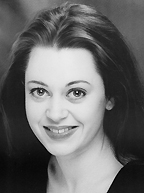|
||||||||||||||||||||||||||||||||||||||||
|
 "The burning of San Francisco. Reproduced from the only photograph that shows the entire scope and extent of this awful conflagration the worst in the history of the world. Fire line over three miles long, property loss three hundred million dollars. On April 18, 1906 at 5:15 AM a quake of 8.25 on the Richter scale hit San Francisco. Greater destruction came from the fires afterwards. The city burned for three days. The combination destroyed 490 city blocks and 25,000 buildings, leaving 250,000 homeless and killing between 450 and 700. Estimated damages, over $350 million." Photograph by Harry Sterling Hooper, 1906. Larger. In her 1938 fictionalized autobiography We Lived as Children, San Francisco native Kathryn Hulme captured this difference, as her persona tells of watching San Francisco burn after the tragic 1906 earthquake. There was too much to watch and always the dynamiting to wait for. Every now and again I looked from the fire to us, sitting on a hill in the middle of a morning watching the city burn. A man put out his hand, caught bits of drifting char, and said: San Francisco, Queen of the Golden Gate, and blew it off his hand with a look on his face that made me think of my father, casual when you knew he wasn't feeling so. We had it in our hair, bits of San Francisco, black scraps of wallpaper, drifting ash of business files, maybe some of it from the stacks of gold-backs that had been burned up in banks. It was exciting to guess where it might have come from but I knew I must not guess aloud. The grown-ups were acting as though they were at a funeral.Kathryn Hulme wrote fiction and non-fiction. Her most familiar work is The Nun's Story, published in 1956. |
|||||||||||||||||||||||||||||||||||||||
|
© 2000-2013 California Legacy Project, Santa Clara University English Department, Santa Clara University, 500 El Camino Real, Santa Clara, CA 95053.
For more information: Terry Beers, 408 554 4335, or . 



|
|

|







